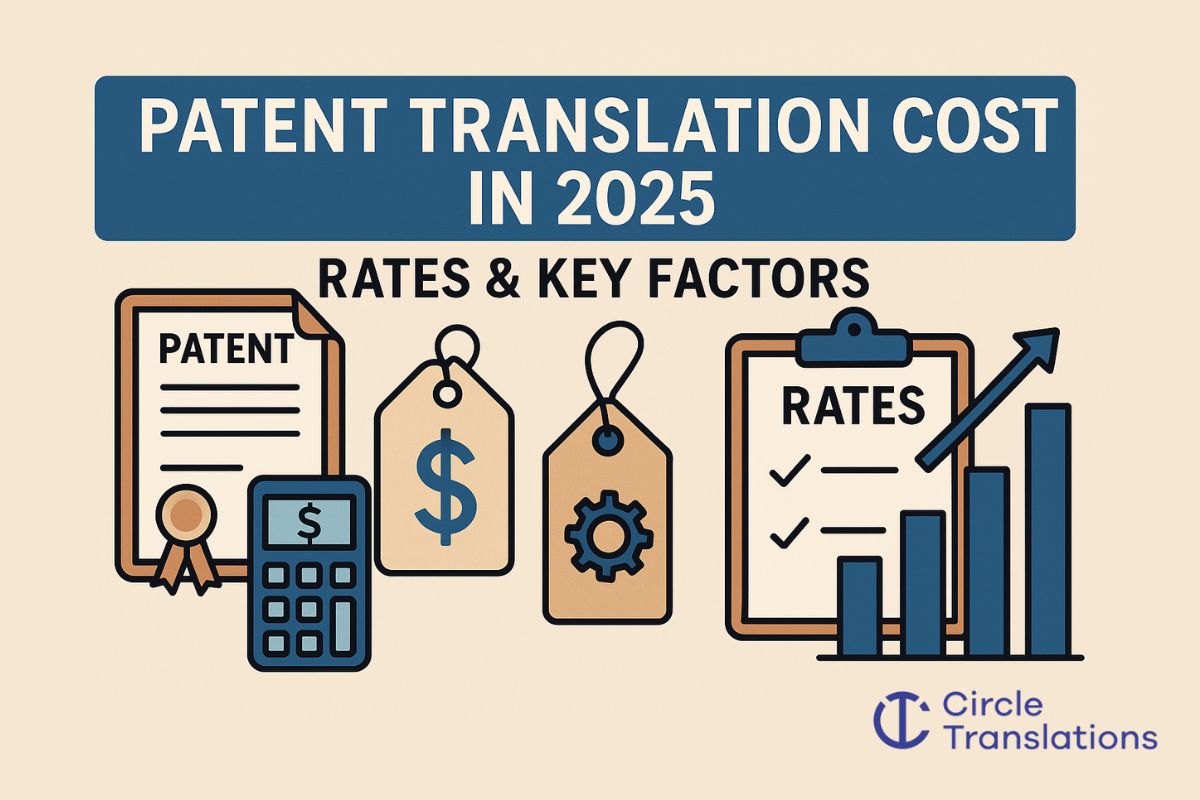The most important question that pops into people’s minds is what does it mean when a movie is dubbed? To unravel this creative world, people need to understand that dubbing in movies refers to the process of replacing the original spoken language dialogue in a film with a translated or alternative language. Dubbing is a crucial aspect of filmmaking and has several important roles:
- Definition and Explanation: Dubbing involves recording new audio tracks, usually by voice actors, to replace the original language spoken by the actors during filming. The new audio is synchronized with the lip movements of the actors on screen, creating a seamless experience.
- Accessibility: One of the primary functions of dubbing is to make films accessible to a wider audience. Not everyone understands the language in which a film is originally produced, and dubbing allows viewers to enjoy movies in their native language. This is especially important for non-English-speaking people, where the majority of movies are produced in English.
- Audio Quality: Audio quality in the dubbing process is paramount. The voice actors must convey the emotions, tone, and nuances of the original performances accurately. Additionally, the synchronization between the dubbed dialogue and the actors’ lip movements must be precise to avoid any distracting mismatches.
The Importance of Dubbing in Film
Dubbing plays a crucial role in the film industry for several compelling reasons. Firstly, it enables films to transgress language and ethnic barriers, making them accessible to world wide citizens. In a world with diverse languages, dubbing enables people from different linguistic backgrounds to enjoy and connect with the material, expanding the film’s reach far beyond its real language audience. This is especially important for international film dubbing markets, where exceptional dubbing can significantly boost a movie’s box office performance.
Secondly, dubbing contributes to the immersive quality of a film. When done perfectly, it ensures that the characters’ voices and emotions connect authentically with the on-screen actions, enhancing the viewer’s overall experience. This emotional connection is important in relaying the desired message and impact of the movie, regardless of its genre like comedy or romance etc.
Furthermore, dubbing can help secure the artistic essence of a movie when subtitles may not capture the nuances of the dialogue. It enables filmmakers to sustain control over how their work is presented.
Lastly, by reaching a maximum audience and ensuring a more smooth experience, dubbing becomes a fine tool in making films connect with people from diverse cultures.
Dubbing vs. Voice-Over: Understanding the Difference
Dubbing and voice-over are two distinct audio techniques used in filmmaking, each giving specific purposes and offering innovative characteristics.
Dubbing involves replacing the original dialogue or audio in a film with a new language or recording for audience understanding. It requires meticulous synchronization to match the lip movements of the on-screen characters. However, dubbing is commonly utilized for foreign language movies to make them reachable to a broader audience while preserving the original visuals.
Voice-over, on the other hand, is the process of adding a narrator’s voice or commentary over existing footage without replacing the original audio. It can provide context, demonstrations, or insights, and is often utilized in documentaries, news broadcasts, and commercials.
When to Use Each Technique:
Dubbing is most appropriate when:
- The primary goal is to make a foreign language film accessible to a different audience.
- Accurate lip synchronization is essential to maintain realism.
- The original audio is of poor quality or needs improvement.
Voice-over is most appropriate when:
- Additional information, commentary, or narration is needed to enhance the viewer’s understanding.
- The original audio is crucial to maintain the film’s authenticity.
The intention is to provide context without altering the original dialogue.
Subtitling vs. Dubbing: Understanding the Difference
Dubbing and subtitling are two distinct techniques used in the world of filmmaking to translate dialogue and make foreign films accessible to a broader audience. Here are the main differences between the two:
Dubbing involves replacing the original language’s audio with a new language while keeping the visuals intact. This requires voice actors to synchronize their speech with the lip movements of the original actors. Its goal is to provide a more diverse experience by removing the need to read subtitles.
Subtitling, on the other hand, involves inculcating translated text at the bottom of the screen, allowing viewers to read while listening to the original audio. It preserves the original actors’ voices and the natural sounds of the film.
Dubbing is often preferred when the target audience is primarily children or when the visuals are complex and require the viewer’s full attention. It’s commonly used in animated films and TV shows for younger audiences.
Subtitling is more suitable when preserving the authenticity of the original language and actor performances is crucial. Additionally, it’s often chosen for films targeting a more mature and diverse audience, as it maintains the nuances and essences of the original dialogue.
Dubbing vs. Subtitles vs. Voice-Overs: A Comparative Analysis
Dubbing, subtitling, and voice-over are three distinct methods for translating films, each with its own set of pros and cons.
Dubbing involves replacing the original dialogue with a translated version, using voice actors who sync their speech with the actors’ lip movements. This approach suggests a calm viewing experience, which makes it simpler for the audience to lose themselves in the movie. However, it can sometimes lead to a loss of the original actors’ emotional nuances and authenticity.
Subtitling involves displaying a translated text at the bottom of the screen while keeping the original audio intact. Subtitles are cost-effective and preserve the original performance and cultural context. However, they may distract some viewers and require the ability to read quickly.
Voice-over entails a narrator providing a translated voiceover in the background while the original audio remains audible. However, this approach is commonly used in documentaries and interviews. It allows viewers to hear the original dialogue while understanding the content through translation. However, voice-overs can occasionally be obtrusive and ruin the flow of the movie.
Finally, the decision between these approaches is influenced by the available resources, the preferences of the target audience, and the specifics of the translated text.
When to Use Dubbing in Film?
Scenarios and Contexts for Using Dubbing in Filmmaking:
- Language Translation: Dub in film is most commonly used when a film needs to be translated into multiple languages for international audiences. This ensures that viewers from different linguistic backgrounds can understand the film.
- Post-Production Corrections: Dubbing can be employed when there are issues with the original audio, such as poor recording quality, background noise, or dialogue errors. Actors can re-record their lines in a controlled studio environment, allowing for higher audio quality.
- Historical or Period Films: In films set in a historical or specific cultural context, using authentic accents and dialects can enhance the audience’s immersion. Dubbing helps achieve this authenticity, as actors can be chosen to match the accents of the characters.
Decision-Making Process for Choosing Dubbing:
- Global Distribution: If a film intends to have a wide international release, dubbing is often preferred over subtitles because it provides a more seamless viewing experience.
- Audio Quality Improvement: When the original audio quality is subpar due to on-set challenges, dubbing can help improve audio clarity and eliminate unwanted noise.
- Cultural Sensitivity: Dubbing allows filmmakers to adapt content to different cultural norms and sensitivities.
How to Dub Your Audio in Post-Production
In the world of filmmaking and audio production, dubbing audio in post-production is an essential step that makes sure the final result is polished and expert. Here’s a brief overview of the steps involved:
- Script Translation: If your project involves foreign-language dialogue or voiceovers, start by translating the original script accurately. Ensure that the translated script conveys the intended meaning and matches lip movements if dubbing for film or TV.
- Voiceover Recording: Hire skilled voice actors who can match the tone, emotion, and timing of the original performances. In a soundproof studio, actors will record the translated lines while watching the source material.
- Dialogue Editing: Once recorded, the voiceover tracks are edited for timing and accuracy. This may involve adjusting the timing of lines to match lip movements, removing unwanted noise, and ensuring smooth transitions between lines.
- Dialogue Mixing: In the mixing stage, balance the original audio, sound effects, and music with the newly dubbed dialogue. Ensure that the new audio blends seamlessly with the existing sound elements for a natural and immersive experience.
- Quality Control: Conduct thorough quality checks to catch any inconsistencies, errors, or mismatches in the dubbing. Pay close attention to lip-sync accuracy and the overall sound quality.
Dubbing in Different Media
Dubbing is a versatile technique employed across various media, each presenting its own set of challenges and considerations. Dubbing in music and the musical genre known as “dub music” are frequently linked in the world of music. In dub music, musicians modify and remix sounds to produce compositions that place a strong emphasis on instrumentals and effects, frequently removing or replacing vocals. This type of dubbing enables imaginative reinterpretations and has the power to completely alter the tone of a song.
In movies, dubbing is frequently used to translate films into different languages, ensuring accessibility to global audiences. This process involves syncing the translated dialogue with the actors’ lip movements, a task that requires precision to maintain the film’s integrity. Moreover, capturing the emotional nuances of the original performance is crucial. Dub in music follows a similar principle, where translated lyrics are synchronized with the rhythm and melody to maintain the integrity of the original song.
Video games also rely on dubbing in movies to enhance the gaming experience. Voice actors must convey character emotions and personality traits while syncing with in-game actions. Additionally, dubbing in video games often involves translating text-based dialogue, necessitating cultural sensitivity and linguistic accuracy.
On platforms like YouTube, content creators engage in YouTube dubbing by adding their own voices or commentary to existing videos. This type of dubbing can range from humorously overdubbing movie scenes to providing insightful commentary on various subjects.
Dubbing in Film: Rise and Popularity
Dubbing in films has seen a significant rise in popularity in contemporary cinema for several compelling reasons.
- Global Audience Accessibility: Dubbing allows films to transcend language barriers, making them accessible to a wider global audience. In an era of globalization, where international markets are crucial for the success of a film, dubbing ensures that language is no longer a hindrance to a movie’s reach.
- Cultural Exchange: Dubbing facilitates cultural exchange by enabling viewers to engage with stories from different parts of the world. This promotes a better understanding of diverse cultures and perspectives, fostering a more inclusive and interconnected global film community.
- Box Office Potential: The revenue potential of a film significantly increases when it can be marketed to a diverse range of countries. Dubbing ensures that filmmakers can tap into these lucrative international markets, which is especially appealing for big-budget productions.
- Streaming Services: The proliferation of streaming platforms has fueled the demand for dubbed content. These services often offer a wide selection of foreign films and series, making it imperative to provide dubbing options for their diverse subscriber base.
- Technological Advancements: Advancements in dubbing technology, such as improved lip-syncing techniques and high-quality voice actors, have enhanced the overall dubbing experience.
Dubbing in Anime: A Unique Perspective
Dubbing in anime holds a unique and essential role in bringing these captivating Japanese animations to a global audience. Unlike other media, anime frequently needs dubbing to fill in linguistic and cultural barriers, allowing viewers all over the world to fully immerse themselves in the complex stories and colorful characters.
The special role of dubbing in anime lies in its power to make these fantastical worlds accessible to non-Japanese speakers. By replacing the original Japanese voices with well-crafted adaptations in different languages, dubbing allows viewers to connect with the emotions and nuances of the characters. It helps create a more inclusive and diverse fan base, fostering a deeper appreciation for the art form.
However, dubbing anime is not without its challenges and nuances. One major challenge is the need to preserve the authenticity and cultural context of the original work while making it relatable to a different audience. Striking the right balance between accuracy and accessibility can be a delicate task. Additionally, finding talented voice actors who can capture the essence of the characters and convey their emotions effectively is crucial. Lip-syncing with the animated characters’ movements adds another layer of complexity to the dubbing process.
The Dubbing Process: From Translation to Release
The dubbing process is a meticulous and multi-stage procedure essential for delivering a polished dub that resonates with the target audience. Here’s a breakdown of its key stages and their significance:
- Script Translation: The initial stage involves translating the original script into the target language while ensuring that the translated dialogue matches the lip-sync and preserves the original context. Accurate translation is crucial as it forms the foundation for the entire dubbing process.
- Voice Casting: Selecting the right voice actors is pivotal in achieving an authentic dub. Casting professionals match actors with the personalities and nuances of the original characters.
- Voice Actor Recording: This is where the chosen voice actors lend their voices to the characters. Their performances should convey emotions, tone, and synchronization with the on-screen characters. A skilled recording session ensures that the dialogues align with the visuals seamlessly and naturally.
- Dialogue Mixing: In this stage, recorded voices are mixed with the original soundtrack, sound effects, and music.
- Release: The final product is prepared for distribution, whether it’s for theatrical release, television broadcast, streaming platforms, or physical media. Quality control ensures that the dub meets industry standards and maintains consistency throughout.
Choosing the Right Dubbing Technique
Selecting the right dubbing technique for a project is crucial to ensure that the final product resonates with the intended audience and aligns with the project’s budget and artistic vision. Here are some key considerations:
- Target Audience: The first step is to understand your target audience. Are you dubbing content for children, teenagers, or adults? Cultural preferences, dialects, and sensibilities play a significant role in choosing the right voice actors and dubbing approach. For instance, children’s content may require a more energetic and engaging dubbing style, while serious dramas demand a nuanced and emotionally resonant approach.
- Budget: Your budget will largely dictate your dubbing options. High-end productions might opt for lip-sync dubbing, where the actors’ voices closely match the lip movements of the original actors. However, this technique can be quite costly but offers the most seamless viewing experience. Conversely, voice-over dubbing is a more budget-friendly option, where the dubbed voices do not necessarily match lip movements perfectly but can be effective when handled skillfully and tactfully.
- Artistic Vision: Lastly, consider the artistic vision of your project. If preserving the original performance and emotional nuances is essential, lip-sync dubbing might be the way to go.
Conclusion
Dubbing in movies refers to the process of replacing the original audio track of a film with a new one in a different language or for various technical reasons. This is often done to make a movie accessible to a wider audience by providing translations of dialogue and narration. However, dubbing involves matching the lip movements and timing of the new dialogue to the original footage, ensuring a panic free viewing experience. It is a common practice in the global film industry, enabling films to reach international markets and non-native speakers on a wider scale.
FAQs
- How can filmmakers ensure high-quality dubbing in their movies?
Filmmakers can ensure high-quality dubbing in their movies by hiring skilled voice actors, maintaining lip-sync accuracy, and using professional recording equipment to ensure clear and natural-sounding dialogue replacement for a better result.
- What are the challenges of dubbing in movies?
There are numerous challenges when it comes to dubbing in movies such as lip-sync issues, preserving the original emotion and tone, finding suitable voice actors, and maintaining consistency in overall translation and performance.
- Are subtitles a better alternative to dubbing in movies?
Subtitles can be a better alternative to dubbing as they preserve the original actors’ performances, voice nuances, and cultural context. Subtitles also allow viewers to hear the authentic language, offering a more immersive experience.
- Why do movies use dubbing?
Movies use dubbing for various reasons, including reaching a wider international audience, overcoming language barriers, and conforming to regional regulations or preferences. However, dubbing can also simplify content consumption for non-native speakers for a smoother experience.
Subtitles

Professional and Accurate Subtitle Services for your Videos.
- Video subtitles specifically tailor-made for improving accessibility.
- Using highly experienced subtitlers with years of industry experience.
- Professionally written and expertly timed.
Translation

We help the world’s top companies translate their content in over 73 languages!
- We localize content for internet websites, games, travel, cryptocurrencies, and more
- Expand your global audience by adding different languages.
- We work only with qualified translators and experienced content creators
Audio translation

Ensuring full accessibility for Blind and visual impaired audiences.
- Visual descriptive events as they occur in the video.
- Working with top audio describers to perfectly describe what is happening on-screen
- Professional sound recording.














